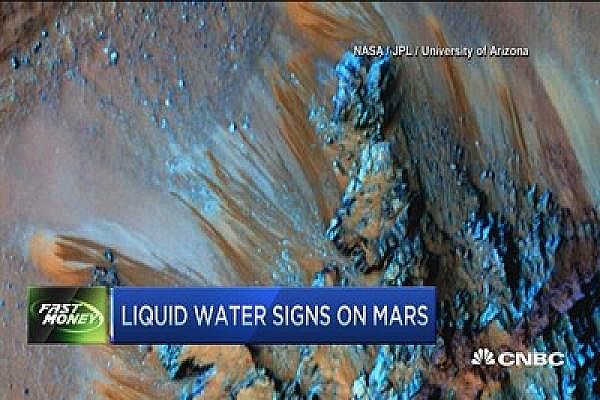Liquid Water Confirmed on Mars

New findings released by NASA and Nature Geoscience provide definite proof that liquid water, which is widely recognized by scientists as one of the essential ingredients for life, can be found on Mars’s surface. Using NASA’s Mars Reconnaissance Orbiter (MRO), researchers have confirmed that liquid water exists on the Red Planet’s surface during the warmest months of its year. An imaging spectrometer, a key component of the MRO, is an instrument with the ability to determine the composition of extraterrestrial matter. It has enabled researchers to detect signatures of hydrated minerals on slopes where mysterious streaks appeared to darken and flow over time. According to Lujendra Ojha of Georgia Tech and lead author of a report on these findings, “Our quest on Mars has been to ‘follow the water,’ in our search for life in the universe, and now we have convincing science that validates what we’ve long suspected.”
These hydrated minerals would have the ability to lower the freezing point of a liquid brine, “just as salt on roads here on Earth causes ice and snow to melt more rapidly,” says NASA. This means that ice on Mars could thaw into liquid at lower temperatures than normal, which is important because even on the hottest of Martian days, temperature only reaches about 70 degrees Fahrenheit.
Does this conclusively mean that Mars can be home to aliens? Well, not exactly. The temperature of the water-mineral brines have been determined to be about -94 degrees Fahrenheit, too cold to support any microbial life forms like those of Earth’s. The water-brines were found at the top 15 cm. of Martian soil, indicating that they were exposed to lethal amounts of cosmic radiation, which is due to the thin Martian atmosphere.
Though these obvious challenges for life are present, this does not definitely mean that life does not exist on the Red Planet. Sadly, for now we have no conclusive answer. NASA has restricted its Curiosity Rover from traversing certain craters because the Rover was not properly sterilized before being launched from Earth, meaning that it has the potential to contaminate the Martian soil before proper research can be conducted.
Sources: NASA.gov and Nature Geoscience







Rich Neuman • Oct 15, 2015 at 7:35 am
Great article.